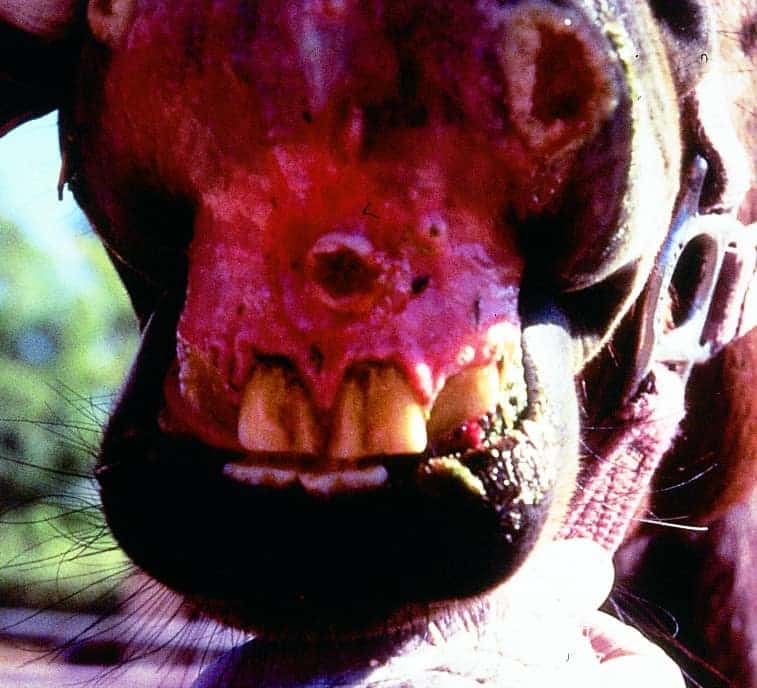Where’s the VSV This Year?

Usually, drought is a bad-bad-very-bad thing. But in the case of vesicular stomatitis virus, it’s a good-good-very-good thing.
“Drought indices tend to correlate with low vector (fly) yields, and the absence of vectors tends to reduce the chances that the virus can be maintained or transmitted by the biting flies,” says Angela Pelzel-McCluskey, DVM, MS, the USDA’s equine epidemiologist with Animal and Plant Health Inspection Service (APHIS).
According to Pelzel-McCluskey, the largest VS outbreak in more than 40 years of recorded history occurred in 2019. In 2020, VSV cases began in April. However, this year, veterinarians haven’t identified a single case in the United States as of the end of July.
“We’ll keep up with our surveillance and testing of animals with potential lesions to rule in/out infection,” says Pelzel-McCluskey. “If we can make it through at least mid-to-late August with (no confirmed cases), then I think we may be in the clear (for the year).”
VS 101
Vesicular stomatitis virus can cause blisters and sores in the mouth and on the tongue, muzzle, teats, or hooves of horses, cattle, swine, sheep, goats, llamas, and a number of other animals. Lesions usually heal in two or three weeks.
Because of the virus’ contagious nature and its resemblance to other diseases such as foot-and-mouth disease, animal health officials urge livestock owners and caretakers to report these symptoms to their veterinarian immediately. Most animals recover with supportive care by a veterinarian.
According to the APHIS website: “Vesicular stomatitis has been confirmed only in the Western Hemisphere. It is known to be an endemic disease in the warmer regions of North, Central, and South America, and outbreaks of the disease in other temperate geographic parts of the hemisphere occur sporadically. The Southwestern and Western United States have experienced a number of vesicular stomatitis outbreaks … Outbreaks usually occur during the warmer months, often along waterways.”
Some states and other countries might restrict movement of, or impose additional requirements for, susceptible animals from states having known VS cases. Before moving livestock, contact the state of destination for its requirements.
Written by:
Diane E. Rice
Related Articles
Stay on top of the most recent Horse Health news with















